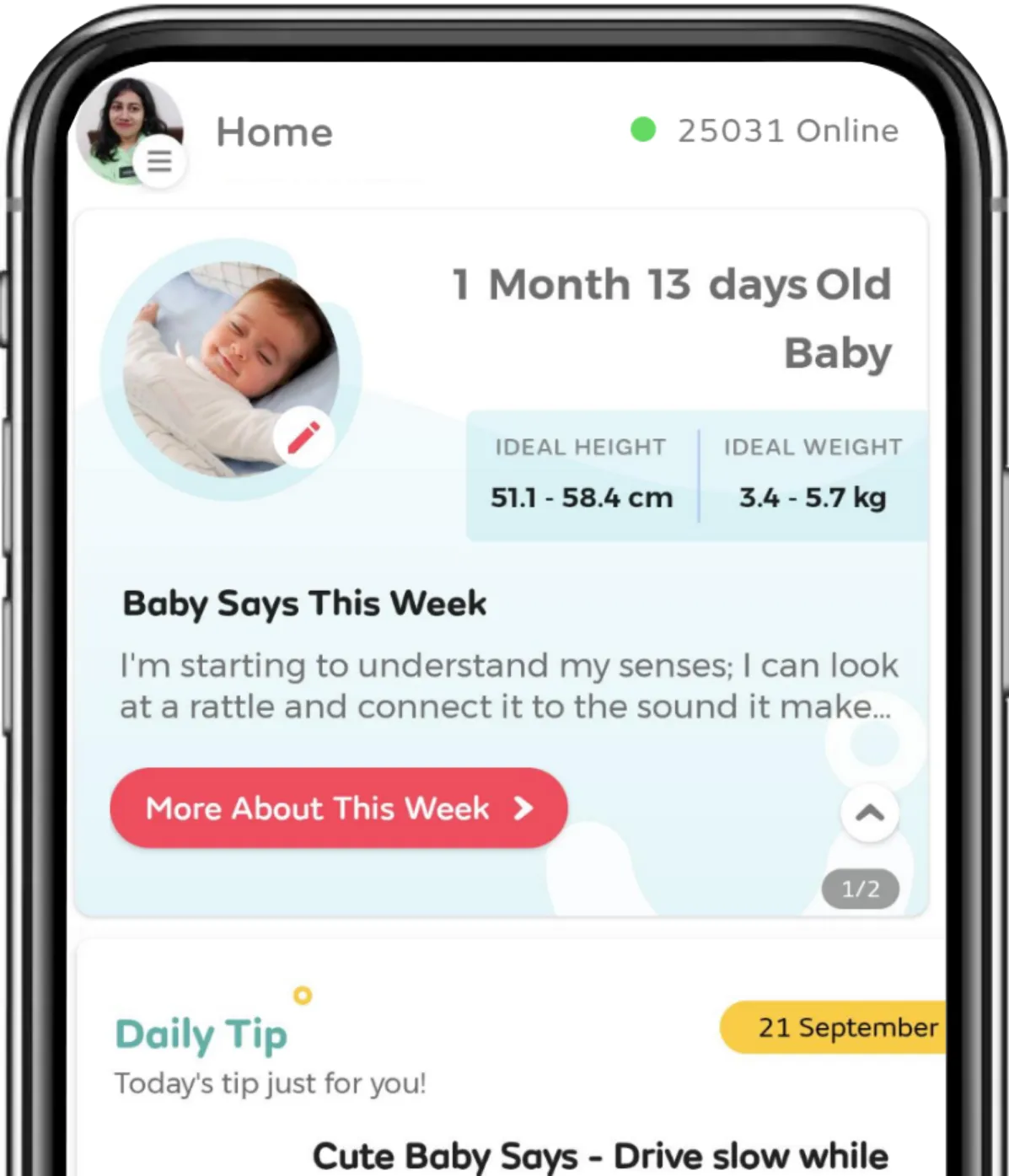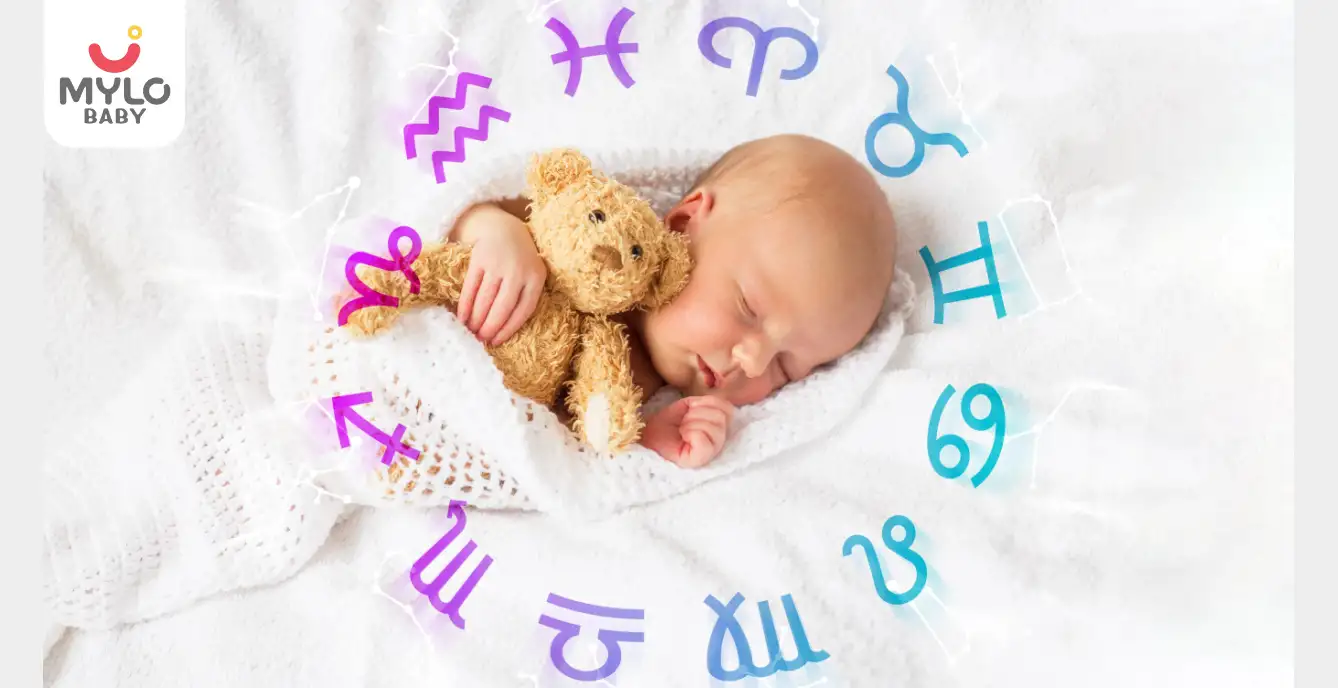Get MYLO APP
Install Mylo app Now and unlock new features
💰 Extra 20% OFF on 1st purchase
🥗 Get Diet Chart for your little one
📈 Track your baby’s growth
👩⚕️ Get daily tips

OR


Article Continues below advertisement
- Home

- Care for Baby

- The Ultimate Guide to Teaching Children Tables 1 to 20
In this Article
- What are the benefits of teaching children maths tables 1 to 20?
- 1. Improved mental calculation skills
- 2. Enhanced problem-solving abilities
- 3. Increased confidence and self-esteem
- 4. Time-saving in exams and daily life
- 5. Foundation for advanced mathematical concepts
- Tables 1 to 20
- 1 to 5 tables
- 6 to 10 table
- 11 to 15 table
- Table of 16 to 20
- Tips and tricks to teach children tables up to 20
- 1. Make it fun
- 2. Provide real-life examples
- 3. Use mnemonic techniques
- 4. Break it down
- 5. Practice regularly
- 6. Provide feedback and praise
- 7. Make it a team effort
- Key Takeaways
Care for Baby
The Ultimate Guide to Teaching Children Tables 1 to 20
Updated on 11 January 2024
Are you ready to embark on a journey that will make math fun and exciting for your little ones? Well, look no further, because we've got the ultimate guide for you! Teaching children tables 1 to 20 might sound like a daunting task, but trust us, it's all about finding the right approach.
In this article, we'll explore creative and effective ways to engage young minds, turning those numbers into friends rather than foes. So, buckle up and get ready to unlock the secrets of teaching tables upto 20 like a pro!
What are the benefits of teaching children maths tables 1 to 20?
Teaching children multiplication table 1-20 is an essential part of their education. Not only does it help build a strong foundation in mathematics, but it also provides several other benefits such as:
Article continues below advertisment
1. Improved mental calculation skills
By memorizing the tables, children develop the ability to perform mental calculations quickly and accurately. This skill is invaluable in everyday life, from calculating expenses to solving complex mathematical problems.
2. Enhanced problem-solving abilities
Learning tables chart 1 to 20 enables children to develop strong problem-solving skills. They learn to recognize patterns and make connections between numbers, which helps them approach mathematical problems with confidence and creativity.
3. Increased confidence and self-esteem
Mastering maths tables boosts children's confidence in their mathematical abilities. As they become proficient in multiplication, they feel more confident in their overall mathematical skills, leading to increased self-esteem and a positive attitude towards learning.
4. Time-saving in exams and daily life
Knowing tables upto 20 by heart saves significant time during exams and in real-life situations. It eliminates the need to rely on calculators or manual calculations, allowing children to solve problems efficiently and accurately.
5. Foundation for advanced mathematical concepts
1 to 20 tables chart serves as the building blocks for more complex mathematical concepts. Once children have a solid understanding of multiplication, they can easily grasp division, fractions, and other advanced topics.
Article continues below advertisment
Tables 1 to 20
To effectively teach children tables 1 to 20 upto 20, it is essential to break them down into manageable sections. Here is a breakdown of the tables:
1 to 5 tables
The first set of tables 1 to 5 are relatively simple and serve as the foundation for understanding multiplication. Begin by introducing the concept of repeated addition, where children learn that multiplication is a shortcut for adding the same number multiple times.
1 x 1 = 1
1 x 2 = 2
1 x 3 = 3
Article continues below advertisment
1 x 4 = 4
1 x 5 = 5
1 x 6 = 6
1 x 7 = 7
1 x 8 = 8
Article continues below advertisment
1 x 9 = 9
1 x 10 = 10
2 x 1 = 2
2 x 2 = 4
Article continues below advertisment
2 x 3 = 6
2 x 4 = 8
2 x 5 = 10
2 x 6 = 12
2 x 7 = 14
Article continues below advertisment
2 x 8 = 16
2 x 9 = 18
2 x 10 = 20
3 x 1 = 3
Article continues below advertisment
3 x 2 = 6
3 x 3 = 9
3 x 4 = 12
3 x 5 = 15
3 x 6 = 18
Article continues below advertisment
3 x 7 = 21
3 x 8 = 24
3 x 9 = 27
3 x 10 = 30
Article continues below advertisment
4 x 1 = 4
4 x 2 = 8
4 x 3 = 12
4 x 4 = 16
4 x 5 = 20
Article continues below advertisment
4 x 6 = 24
4 x 7 = 28
4 x 8 = 32
4 x 9 = 36
4 x 10 = 40
5 x 1 = 5
5 x 2 = 10
5 x 3 = 15
5 x 4 = 20
5 x 5 = 25
5 x 6 = 30
5 x 7 = 35
5 x 8 = 40
5 x 9 = 45
5 x 10 = 50
6 to 10 table
The table 6 to 10 introduce larger numbers and more complex multiplication patterns. It is important to emphasize the relationship between these numbers and the earlier tables. For example, the 6 times table is simply the 3 times table doubled.
6 x 1 = 6
6 x 2 = 12
6 x 3 = 18
6 x 4 = 24
6 x 5 = 30
6 x 6 = 36
6 x 7 = 42
6 x 8 = 48
6 x 9 = 54
6 x 10 = 60
7 x 1 = 7
7 x 2 = 14
7 x 3 = 21
7 x 4 = 28
7 x 5 = 35
7 x 6 = 42
7 x 7 = 49
7 x 8 = 56
7 x 9 = 63
7 x 10 = 70
8 x 1 = 8
8 x 2 = 16
8 x 3 = 24
8 x 4 = 32
8 x 5 = 40
8 x 6 = 48
8 x 7 = 56
8 x 8 = 64
8 x 9 = 72
8 x 10 = 80
9 x 1 = 9
9 x 2 = 18
9 x 3 = 27
9 x 4 = 36
9 x 5 = 45
9 x 6 = 54
9 x 7 = 63
9 x 8 = 72
9 x 9 = 81
9 x 10 = 90
10 x 1 = 10
10 x 2 = 20
10 x 3 = 30
10 x 4 = 40
10 x 5 = 50
10 x 6 = 60
10 x 7 = 70
10 x 8 = 80
10 x 9 = 90
10 x 10 = 100
11 to 15 table
Table 11 to 15 can be challenging for some children due to the presence of two-digit numbers. Encourage children to break down these tables into more manageable parts. For example, the 11 times table follows a pattern of adding the digit to the number itself (e.g., 11, 22, 33, etc.).
11 x 1 = 11
11 x 2 = 22
11 x 3 = 33
11 x 4 = 44
11 x 5 = 55
11 x 6 = 66
11 x 7 = 77
11 x 8 = 88
11 x 9 = 99
11 x 10 = 110
12 x 1 = 12
12 x 2 = 24
12 x 3 = 36
12 x 4 = 48
12 x 5 = 60
12 x 6 = 72
12 x 7 = 84
12 x 8 = 96
12 x 9 = 108
12 x 10 = 120
13 x 1 = 13
13 x 2 = 26
13 x 3 = 39
13 x 4 = 52
13 x 5 = 65
13 x 6 = 78
13 x 7 = 91
13 x 8 = 104
13 x 9 = 117
13 x 10 = 130
14 x 1 = 14
14 x 2 = 28
14 x 3 = 42
14 x 4 = 56
14 x 5 = 70
14 x 6 = 84
14 x 7 = 98
14 x 8 = 112
14 x 9 = 126
14 x 10 = 140
15 x 1 = 15
15 x 2 = 30
15 x 3 = 45
15 x 4 = 60
15 x 5 = 75
15 x 6 = 90
15 x 7 = 105
15 x 8 = 120
15 x 9 = 135
15 x 10 = 150
Table of 16 to 20
The table of 16, 17, 18 and 19 & 20 are the final set of multiplication tables. By this point, children should have a solid understanding of the multiplication concept and be able to apply it confidently.
16 x 1 = 16
16 x 2 = 32
16 x 3 = 48
16 x 4 = 64
16 x 5 = 80
16 x 6 = 96
16 x 7 = 112
16 x 8 = 128
16 x 9 = 144
16 x 10 = 160
17 x 1 = 17
17 x 2 = 34
17 x 3 = 51
17 x 4 = 68
17 x 5 = 85
17 x 6 = 102
17 x 7 = 119
17 x 8 = 136
17 x 9 = 153
17 x 10 = 170
18 x 1 = 18
18 x 2 = 36
18 x 3 = 54
18 x 4 = 72
18 x 5 = 90
18 x 6 = 108
18 x 7 = 126
18 x 8 = 144
18 x 9 = 162
18 x 10 = 180
19 x 1 = 19
19 x 2 = 38
19 x 3 = 57
19 x 4 = 76
19 x 5 = 95
19 x 6 = 114
19 x 7 = 133
19 x 8 = 152
19 x 9 = 171
19 x 10 = 190
20 x 1 = 20
20 x 2 = 40
20 x 3 = 60
20 x 4 = 80
20 x 5 = 100
20 x 6 = 120
20 x 7 = 140
20 x 8 = 160
20 x 9 = 180
20 x 10 = 200
You may also like: The Ultimate Guide to Panchatantra Stories for Kids
Tips and tricks to teach children tables up to 20
Teaching children tables 1 to 20 can be a challenging task. However, with the right approach and a few helpful tips and tricks, you can make the learning process more enjoyable and effective. Here are seven tips to help you teach children maths tables 1 to 20:
1. Make it fun
Incorporate games, puzzles, and interactive activities to make learning tables an enjoyable experience for children. Use colorful visuals such as a tables chart 1 to 20 to engage their senses and make the learning process more interactive.
2. Provide real-life examples
Relate multiplication to everyday situations to help children understand the practical applications of multiplication table 1-20. For example, demonstrate how multiplication is used to calculate the total number of objects in a given scenario, such as counting the number of apples in a basket.
3. Use mnemonic techniques
Mnemonic techniques, such as songs, rhymes, or memory tricks, can help children memorize the multiplication facts more easily. Create catchy tunes or rhymes that incorporate the multiplication tables, making them fun and memorable for children.
4. Break it down
Divide the tables into smaller sections and focus on one set at a time. This approach prevents information overload and allows children to grasp the multiplication concepts gradually. Start with the easier tables and gradually progress to the more challenging ones.
5. Practice regularly
Consistent practice is essential for children to master the tables. Incorporate daily practice sessions into their routine, using a variety of activities such as worksheets, flashcards, or online games. Regular practice helps reinforce the multiplication facts and improves recall speed.
6. Provide feedback and praise
Offer positive reinforcement and constructive feedback to motivate children and boost their confidence. Celebrate their achievements and progress, no matter how small, to encourage a positive learning environment.
7. Make it a team effort
Involve parents, siblings, or peers in the learning process. Group activities and competitions can make learning tables more engaging and foster a sense of teamwork and friendly competition among children.
You may also like: Top 15 Akbar and Birbal Stories for Young Kids
Key Takeaways
Teaching children tables 1 to 20 is crucial for their mathematical development. It enhances their mental calculation skills, problem-solving abilities, confidence, and provides a strong foundation for advanced mathematical concepts. By breaking down the tables into manageable sections, using mnemonic techniques, and incorporating fun and interactive activities, you can make the learning process enjoyable and effective for children. Remember to provide regular practice, feedback, and involve parents and peers to create a supportive learning environment.



Written by
Anupama Chadha
Anupama Chadha, born and raised in Delhi is a content writer who has written extensively for industries such as HR, Healthcare, Finance, Retail and Tech.
Read MoreGet baby's diet chart, and growth tips

Related Articles
Understanding RSV And Its Long-Term Impact On Lung Health In Preterm Infants
Preventing Respiratory Syncytial Virus (RSV) In Preemies: Essential Steps For New Parents
How Respiratory Syncytial Virus (RSV) Impacts Premature Babies Differently: What Every Parent Needs To Know
Adverbs: A Comprehensive Guide to help small children learn the usage of adverbs
Related Questions
Hello frnds..still no pain...doctor said head fix nhi hua hai..bt vagina me pain hai aur back pain bhi... anyone having same issues??

Kon kon c chije aisi hai jo pregnancy mei gas acidity jalan karti hain... Koi btayega plz bcz mujhe aksar khane ke baad hi samagh aata hai ki is chij se gas acidity jalan ho gyi hai. Please share your knowledge

I am 13 week pregnancy. Anyone having Storione-xt tablet. It better to have morning or night ???

Hlo to be moms....i hv a query...in my 9.5 wk i feel body joint pain like in ankle, knee, wrist, shoulder, toes....pain intensity is high...i cnt sleep....what should i do pls help....cn i cosult my doc.

Influenza and boostrix injection kisiko laga hai kya 8 month pregnancy me and q lagta hai ye plz reply me

Related Topics
RECENTLY PUBLISHED ARTICLES
our most recent articles

Activities
Thought of the Day for Kids to Spark Imagination & Positivity

Education
100 Thought of the Day to Brighten and Motivate Young Minds

Orange in Pregnancy: Health Benefits, Side Effects & Precautions

Diet & Nutrition
Radish in Pregnancy: Benefits and Safety Precautions

TV & OTT
Top 10 Pakistani Dramas That Will Keep You Hooked

Astrology
New Born Baby Astrology: What Does Your Baby's Zodiac Sign Say About Their Personality
- Pelvic Pain: Causes, Symptoms and Treatment Options
- Brown Discharge: Causes, Symptoms and When to Seek Help
- Baby Hair Style: A Complete Guide for Trendy Parents
- Breast Pain During Ovulation: A Comprehensive Guide on Causes and Solutions
- PCOS Ultrasound: What to Expect During the Procedure
- Uterus Didelphys: Understanding Symptoms, Risks and Treatment Options
- Septate Uterus: A Comprehensive Guide on Symptoms, Risks, and Treatment Options
- Should Pregnant Women Get Flu Shots
- Why you should choose a Vaginal Delivery? Know the pros & cons
- The Art of Painting When Pregnant: Tips for a Safe and Creative Experience
- Do Pregnant Women Get Their Period?
- A Guide to Precautions After Ovulation When Trying to Conceive
- Tight Vagina and Women's Health: An In-Depth Guide
- The Ultimate Guide to Using Olive Oil for Baby Massage


AWARDS AND RECOGNITION
Mylo wins Forbes D2C Disruptor award
Mylo wins The Economic Times Promising Brands 2022
AS SEEN IN
















At Mylo, we help young parents raise happy and healthy families with our innovative new-age solutions:
- Mylo Care: Effective and science-backed personal care and wellness solutions for a joyful you.
- Mylo Baby: Science-backed, gentle and effective personal care & hygiene range for your little one.
- Mylo Community: Trusted and empathetic community of 10mn+ parents and experts.
Product Categories
baby carrier | baby soap | baby wipes | stretch marks cream | baby cream | baby shampoo | baby massage oil | baby hair oil | stretch marks oil | baby body wash | baby powder | baby lotion | diaper rash cream | newborn diapers | teether | baby kajal | baby diapers | cloth diapers |








